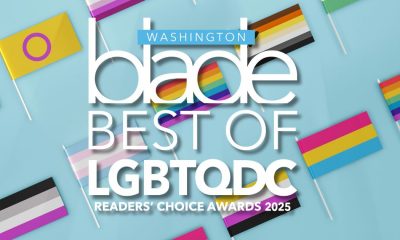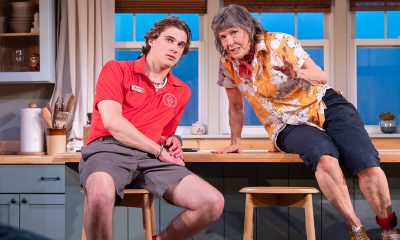Arts & Entertainment
‘Pop!’ goes the easel
Warhol Factory recreated in new Studio production

‘Pop!’
Through Aug. 7
The Studio 2ndStage
1501 14th Street, NW
$38-$43
202-332-3300
There’s a happening on 14th Street. It has all the essential ‘60s elements: music, sex, drugs, counterculture sensibility, art, some dancing, and even a cast of Warhol superstars. But be warned — it’s a violent crime scene too.
The Studio 2ndStage’s summer show “Pop!” is a musical mystery that asks not so much who shot Andy Warhol (everyone knows it was radical feminist writer and hanger-on Valerie Solanos who pulled the trigger), but why? Was the non-lethal shooting a random act of craziness or did the seemingly soulless Warhol ask for it? In 90 fast-paced minutes of song, fun, and complaint, we’re asked to figure it out.
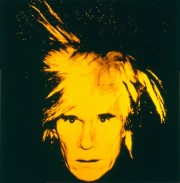
An Andy Warhol self portrait. The eccentric late gay artist is the subject of a current Studio Theatre production, ‘Pop!’ (Photo courtesy of the Andy Warhol Museum, Pittsburgh)
Action kicks off interactively, and getting seated is parted of the fun. On entering Studio Stage 4, theatergoers find a party already in progress filled with scenesters (costumed in bell bottoms, fringy vests and mod frocks by Ivania Stack) and a few artists in action. Here a woman paints the inside of a bathtub; across the room, a videographer films a young man in various states of undress. His image is projected largely on a back wall.
Set designer Giorgos Tsappas has morphed the black box venue into a slightly smaller version of Warhol’s legendary Factory (his silver-walled Manhattan studio/party space) with aluminum foil and varied touches of iconography including brightly labeled Brillo boxes and 15 outsized handgun silk screens.
Eventually the milling about ends, the stage lights come up and we meet the famously bewigged Warhol — played with marvelous languor by Tom Story. We learn he has blithely offered each of his minions an empty brown paper lunch bag in lieu of money or contracts (no wonder he was shot). And in response to that shooting, he utters an underwhelming “Ouch,” quickly setting the tone and introducing Warhol in all of his deadpan glory.
Sleuthing begins in earnest when the evening’s hostess — transsexual star Candy Darling (young actor Matthew Delorenzo) — assigns detective duties to Factory factotum Gerard Malanga (Luke Tudball) and opera-loving, speed freak Ondine (Sean-Maurice Lynch) who proceeds to snort up the chalk used to mark where Warhol’s injured body had fallen. While all and sundry are suspect, inspector magnifying glasses are trained on a trio of Factory ladies: beautiful heiress turned junkie, Edie Sedgewick (Marylee Adams); smart, sexy Viva (Deborah Lubega); and finally the fore-mentioned Valerie Solanas (Rachel Zampelli), the proud lesbian author of the SCUM (society for cutting up men) manifesto. Seems each has her reasons to resent Warhol, and all three are called on to express it rather formulaically in song.
The score (played by a terrific six-person band led by Christopher Youstra) makes reference to various musical genres — rock, Latin, vaudeville and Gospel. Highlights include a spot lit Candy Darling singing a lament to her fading star, and the madcap funeral sequence in which the cast dons outré clerical garb and sing long and loud about their injured leader. Even Mama Wahola (the artist’s original surname) makes the scene.
Then there’s “Big Gun,” a rousing disparagement of the male member sung by Solanas backed by Edie and Viva. But what’s missing from the score — considering many of the Factory girls and boys’ prodigious drug habits — is a musical paean to heroine or maybe a zippy patter song about methamphetamine.
Stylishly staged by Studio 2ndStage’s artistic director Keith Alan Barker, the production is a strong collaboration of designers and performers. They’ve recreated a feel for the Factory in a musical theater setting — not easy. But don’t come to “Pop!” expecting to find doppelgangers for coltish Edie, aquiline Viva, and pouty, floppy-haired Melanga, you won’t. Instead you will find an energized, diverse cast of talented actors working looks of their own.
After Warhol’s brush with death, the Factory changed. Things became less sloppy; security was upped — no longer were quirky nonentities allowed in from the street. Warhol changed too. He began to focus even more on making money and cultivated a different crowd, befriending tonier It girls like Bianca Jagger and Lee Radziwill.
We know who shot Andy Warhol. Why still remains a matter of opinion. Solonas the gatecrasher was nuts, but like most of Warhol’s real superstars, she also craved attention and may possibly have felt used by the man who ultimately and unwittingly gave them all fame. In some gray but mostly candy-colored bright tones, this “Pop!” makes revisiting the crime scene fun.
Books
‘Dogs of Venice’ looks at love lost and rediscovered
A solo holiday trip to Italy takes unexpected turn
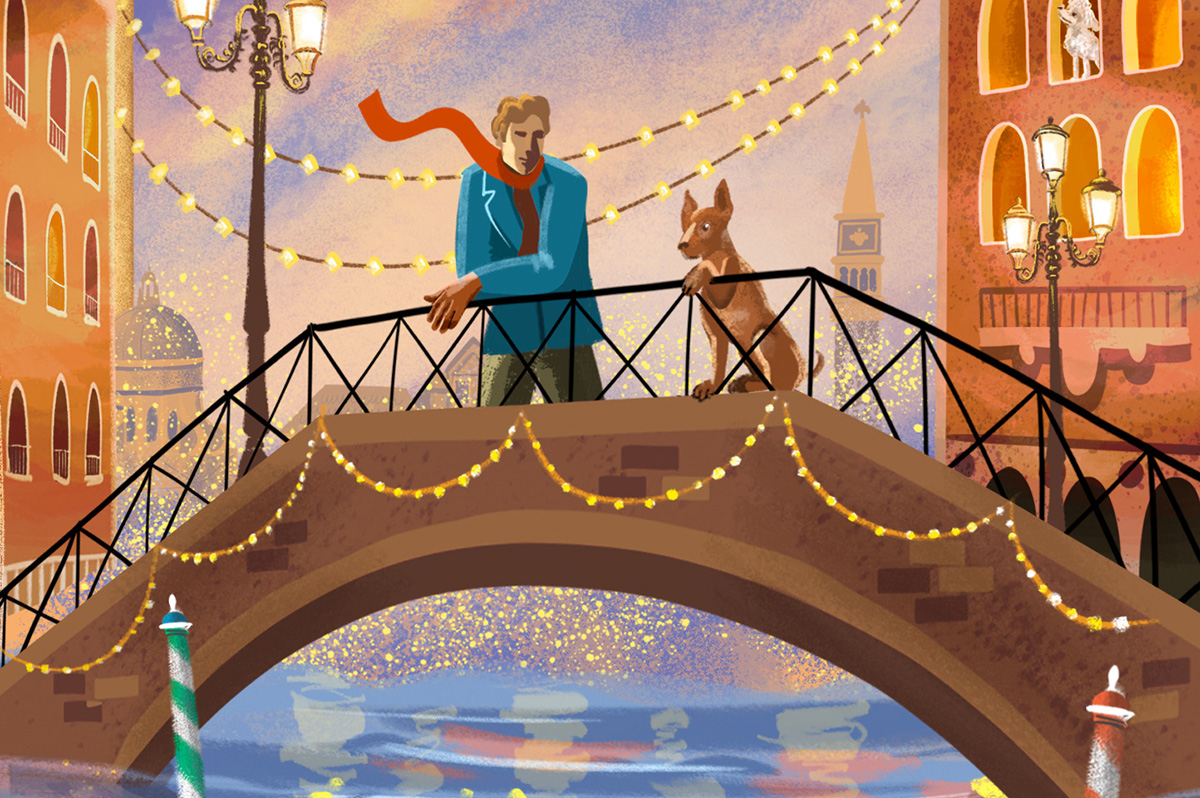
‘The Dogs of Venice’
By Steven Crowley
c.2025, G.P. Putnam & Sons
$20/65 pages
One person.
Two, 12, 20, you can still feel alone in a crowded room if it’s a place you don’t want to be. People say, though, that that’s no way to do the holidays; you’re supposed to Make Merry, even when your heart’s not in it. You’re supposed to feel happy, no matter what – even when, as in “The Dogs of Venice” by Steven Rowley, the Christmas tinsel seems tarnished.

Right up until the plane door closed, Paul held hope that Darren would decide to come on the vacation they’d planned for and saved for, for months.
Alas, Darren was a no-show, which was not really a surprise. Three weeks before the departure, he’d announced that their marriage wasn’t working for him anymore, and that he wanted a divorce. Paul had said he was going on the vacation anyhow. Why waste a perfectly good flight, or an already-booked B&B? He was going to Venice.
Darren just rolled his eyes.
Was that a metaphor for their entire marriage? Darren had always accused Paul of wanting too much. He indicated now that he felt stifled. Still, Darren’s unhappiness hit Paul broadside and so there was Paul, alone in a romantic Italian city, fighting with an espresso machine in a loft owned by someone who looked like a frozen-food spokeswoman.
He couldn’t speak or understand Italian very well. He didn’t know his way around, and he got lost often. But he felt anchored by a dog.
The dog – he liked to call it his dog – was a random stray, like so many others wandering around Venice unleashed, but this dog’s confidence and insouciant manner inspired Paul. If a dog could be like that, well, why couldn’t he?
He knew he wasn’t unlovable but solo holidays stunk and he hated his situation. Maybe the dog had a lesson to teach him: could you live a wonderful life without someone to watch out for, pet, and care for you?
Pick up “The Dogs of Venice,” and you might think to yourself that it won’t take long to read. At under 100 pages, you’d be right – which just gives you time to turn around and read it again. Because you’ll want to.
In the same way that you poke your tongue at a sore tooth, author Steven Rowley makes you want to remember what it’s like to be the victim of a dead romance. You can do it here safely because you simply know that Paul is too nice for it to last too long. No spoilers, though, except to say that this novel is about love – gone, resurrected, misdirected – and it unfolds in exactly the way you hope it will. All in a neat evening’s worth of reading. Perfect.
One thing to note: the Christmas setting is incidental and could just as well be any season, which means that this book is timely, no matter when you want it. So grab “The Dogs of Venice,” enjoy it twice with your book group, with your love, or read it alone.
The Blade may receive commissions from qualifying purchases made via this post.
a&e features
Local, last-minute holiday gift ideas
Celebrate the season while supporting area businesses
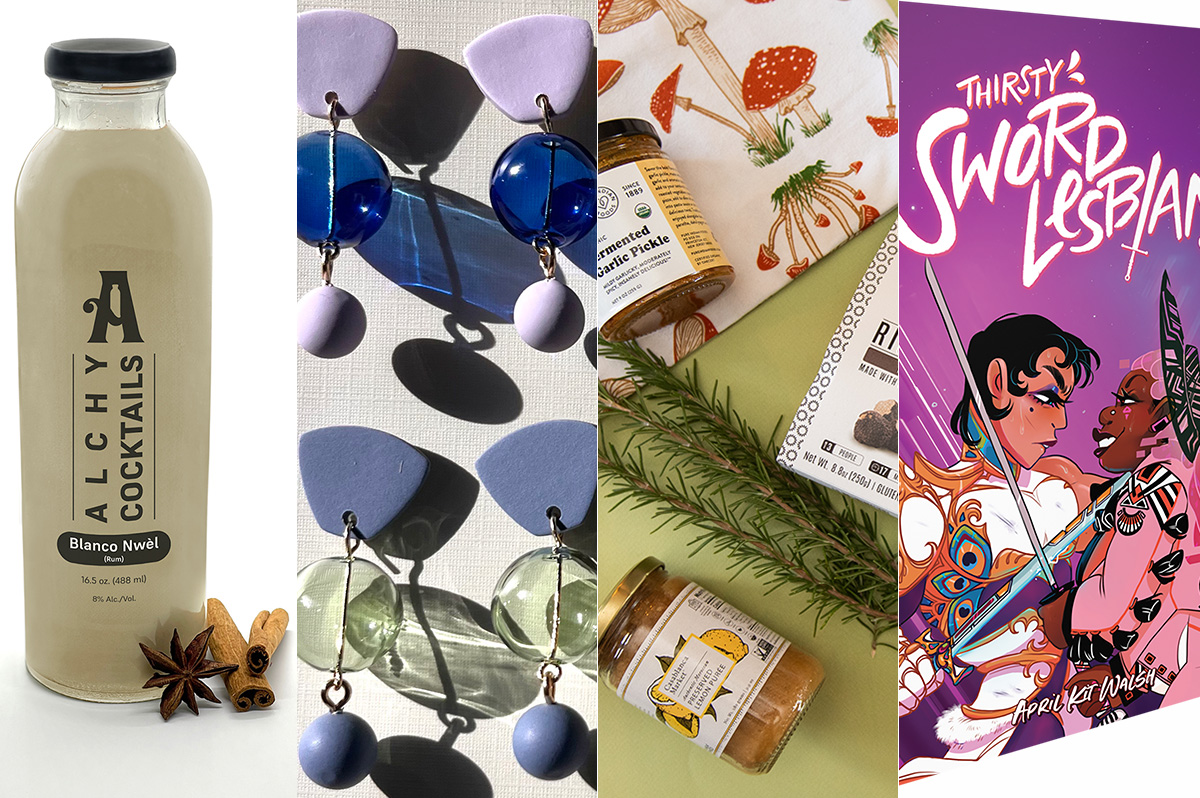
The DowntownDC Holiday Market is bustling. Union Station is decked out with its annual Christmas tree. Washingtonians have wrapped their houses and apartment balconies with festive lights and holiday decorations. The holiday season is here. And with stockings to fill and empty space under the tree, Washington’s local shops and artists have plenty to offer.
Show your LGBTQ and D.C. pride with the Washington Blade’s annual holiday gift guide.
To embrace the holiday buzz: The Blanco Nwèl cocktail from Alchy Cocktails. This Caribbean eggnog is one of Alchy Cocktail’s seasonal holiday cocktails. The flavor profile is similar to coquito, a traditional Puerto Rican Christmas drink with a coconut base. As a queer and Caribbean-owned business, Alchy Cocktails has been based out of Washington since 2021. Blanco Nwèl is available in both cocktail ($24) and mocktail ($12) online and at a variety of holiday markets, including the Tingey Plaza Holiday Market, the Flea Market at Eastern Market, Union Station’s Main Hall Holiday Market, and more. ($24)
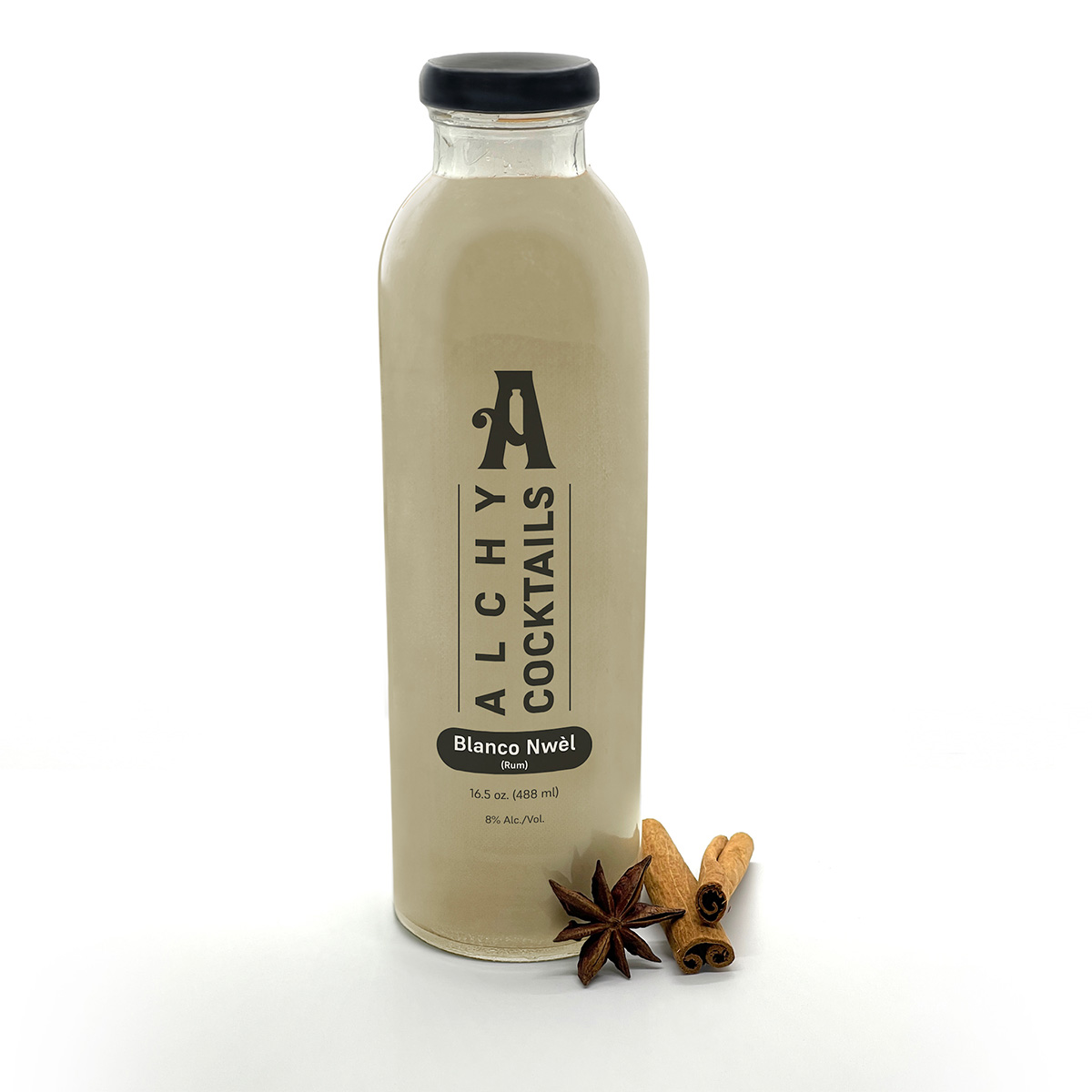
A spicy bite: Gordy’s Cajun Okra from Salt and Sundry. These spicy, tangy pickles pull on Southern Cajun-style flavors, packing a punch with paprika, cayenne, and more. Gordy’s is an LGBTQ-owned and Washington-based brand, making this gift an opportunity to support a local LGBTQ business straight from the jar. This pantry staple is available on Salt & Sundry’s website and at its locations in Union Market, Logan Circle, and its Georgetown holiday pop-up store. ($14)
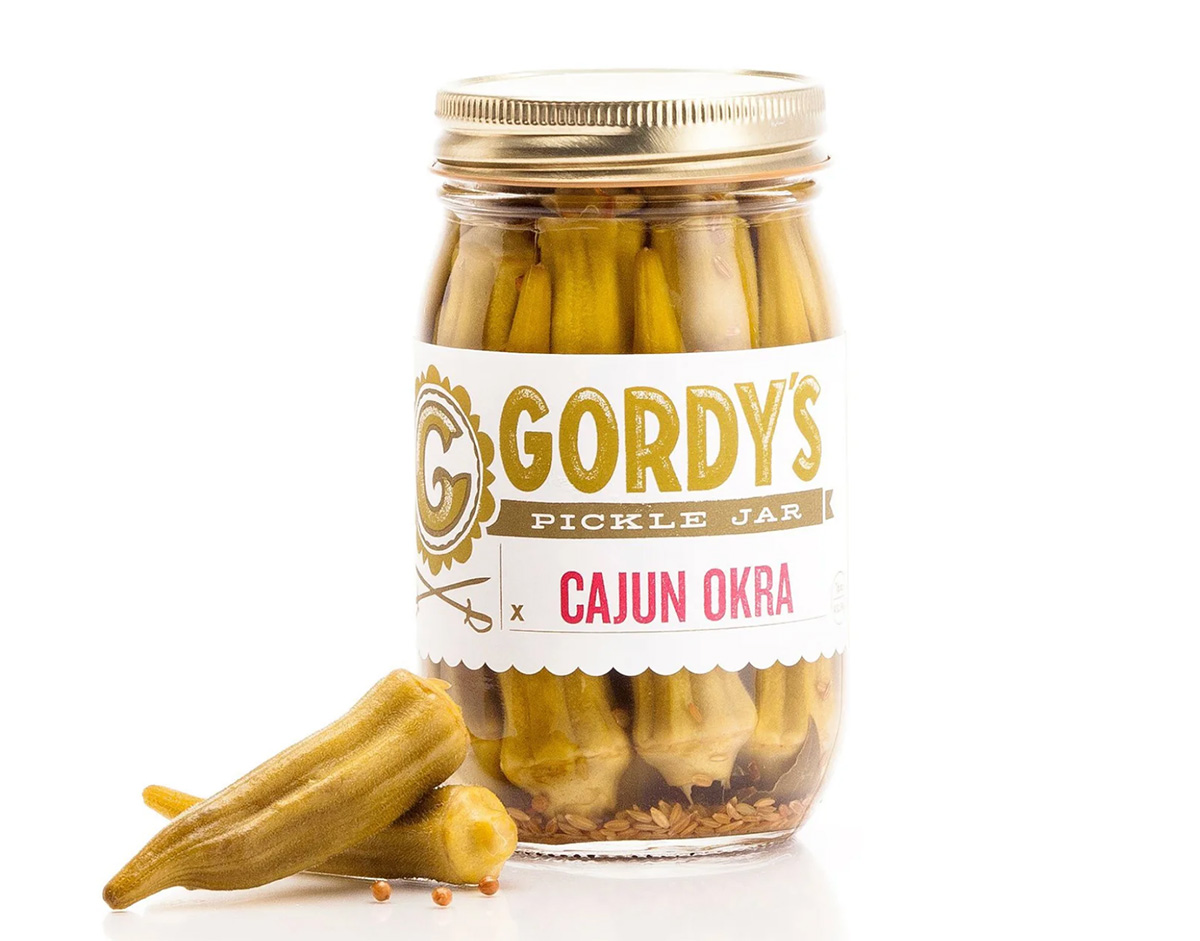

To celebrate Washington pride: The DC Landmark Tote Bag from The Neighborgoods. Native Washingtonians, visitors, friends and family alike will find something to love about this Washington-themed tote bag. Food trucks, the 9:30 Club, the Metro logo and pandas from the National Zoo are just some of the city’s landmarks depicted across the tote in a red, white, and blue color palette. The tote is a part of the DC Landmarks collection, which donates 10 percent of its sales to the American Civil Liberties Union. The Neighborgoods itself is a local, woman-owned business built out of a passion for screen-printing in 2013. The 100 percent cotton canvas tote is for sale online or at the DowntownDC Holiday Market. ($22)
To give friends and family their flowers: The Flowers Bandana from All Very Goods. This 100 percent cotton bandana was designed in Washington and hand printed in India. Its uniqueness comes in being covered with the faces of Black women, representing a “love letter to all women but especially Black women,” according to All Very Goods. The Black woman-owned and operated business, based out of Northwest Washington, has a mission to celebrate diversity and representation through its products. The bandana intends to give Black women their “flowers.” The Flowers bandana is available for purchase online. ($24)
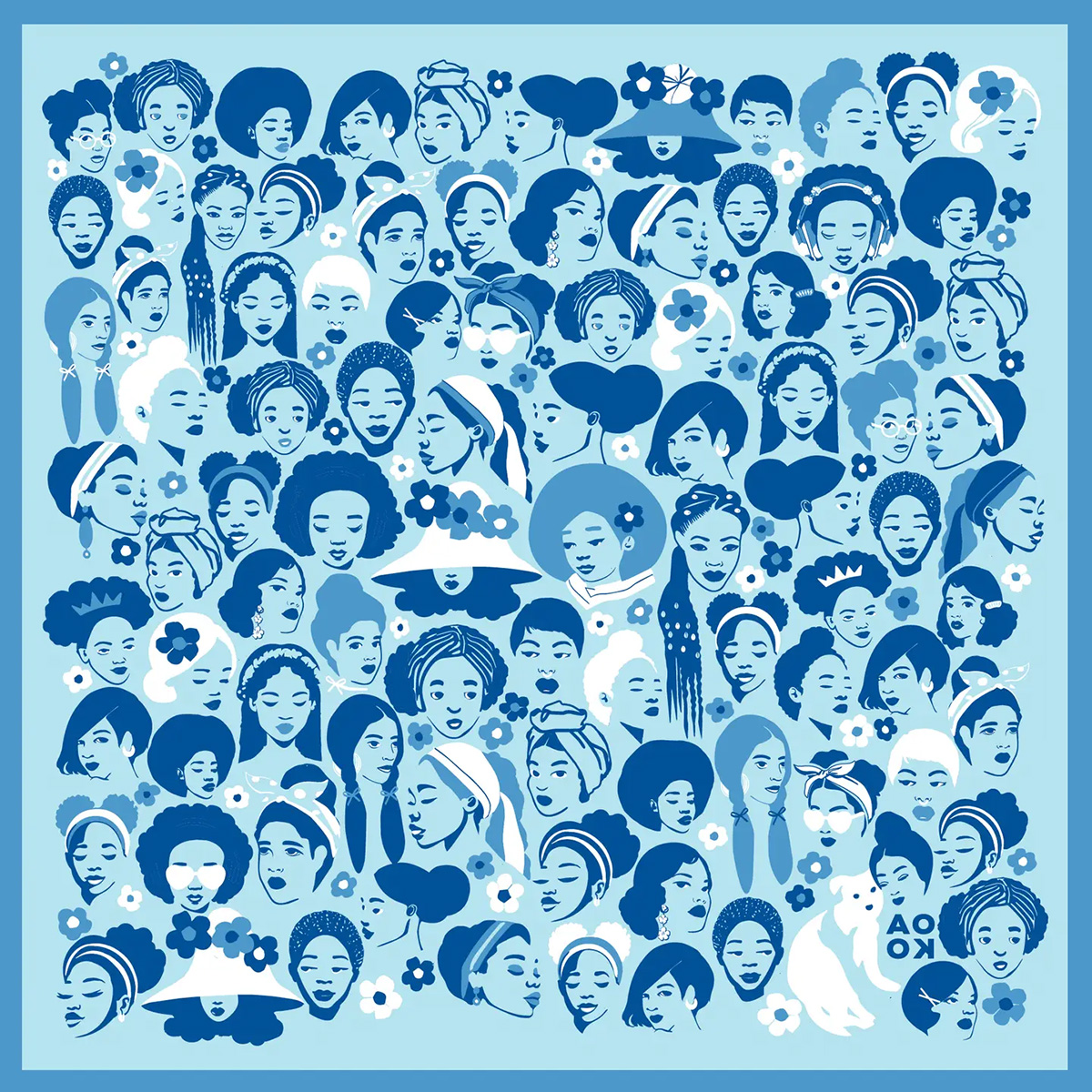
To unlock culinary creativity: The Curious Chef Gift Collection from Each Peach Market. This customizable collection of kitchen oddities — ranging from tinned fish to chili oil — is a quirky gift for the most inventive chefs. The collection is available in a Standard Santa, Extra Goodies and Super Holiday Size for up to $165. The Washington-based market, founded in 2013, permits customers to make the collection special by specifying what unique ingredients are packaged, including products made by local or LGBTQ brands. Each Peach Market offers assembly and pick up in-person at its Mount Pleasant shop and also offers local delivery and nationwide shipping via its website. ($85)
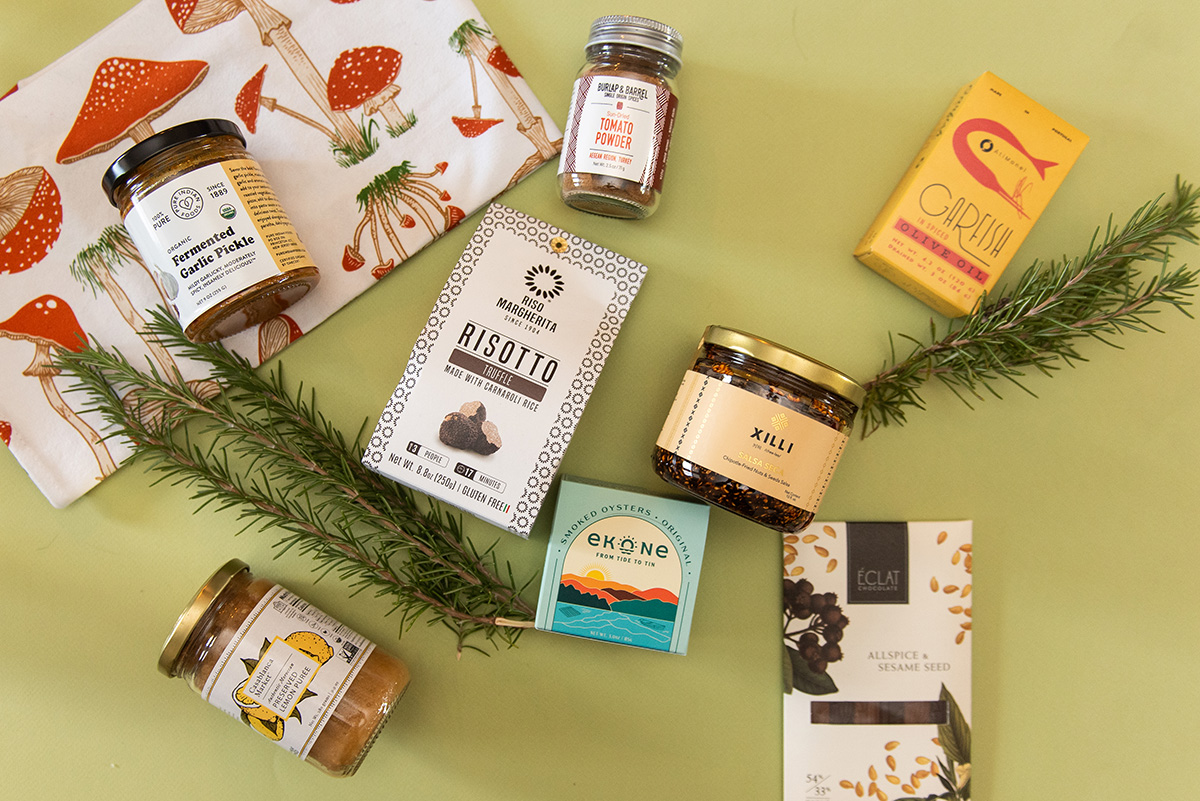
To give a touch of sweetness: The DC Landmark Chocolate Covered Oreo Holiday Cookies from Capital Candy Jar. Wrapped in a festive red bow, this box of nine cookies embraces love for Washington and the holiday season in one. Among the dark and milk chocolate covered cookies are images of the U.S. Capitol, the White House, the Lincoln Memorial, the Jefferson Memorial and festive hollies. The treat, packaged in a Hill East facility just a few blocks from the Capitol, is available for purchase online and at the DowntownDC Holiday Market. ($23.95)
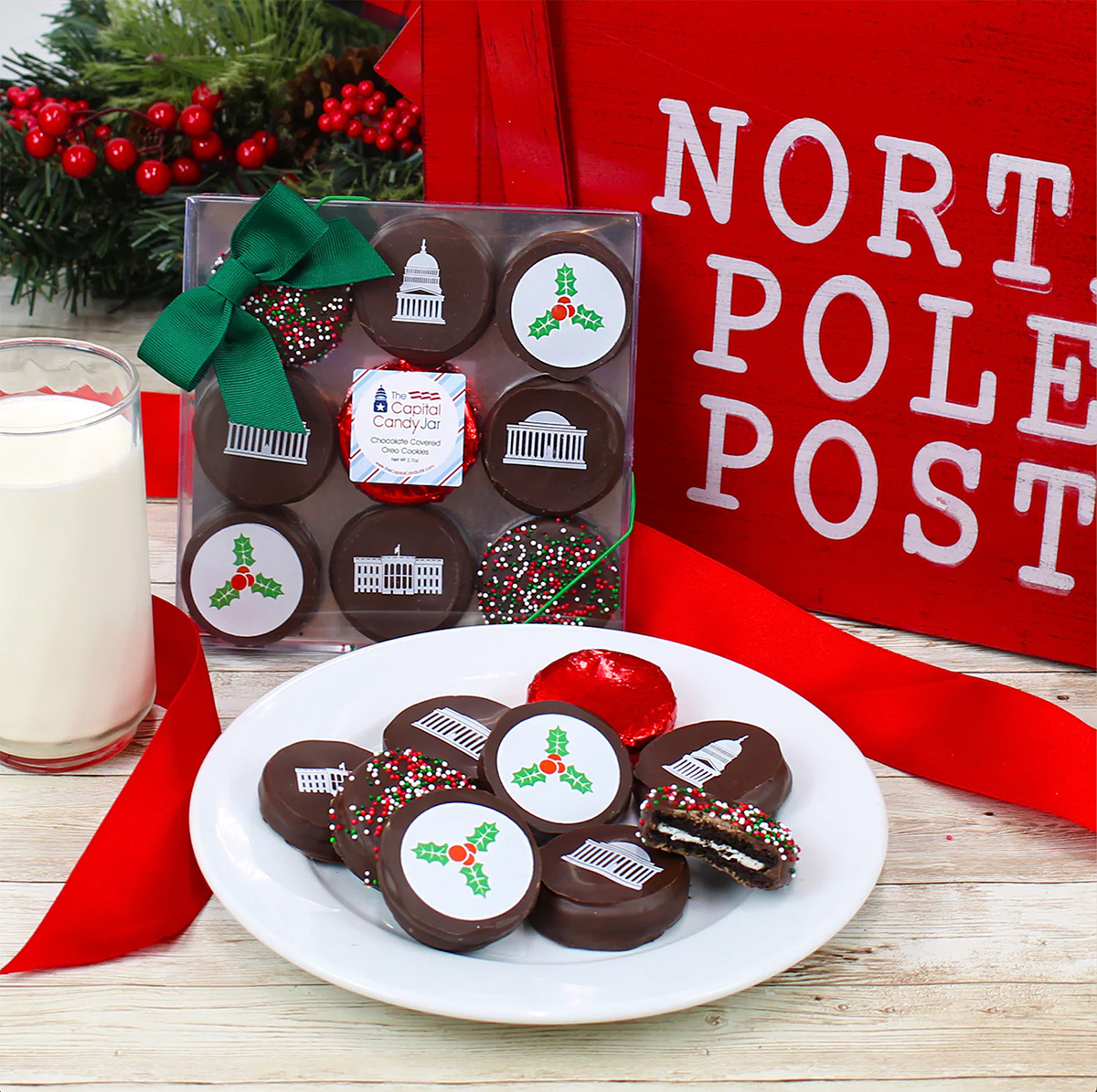
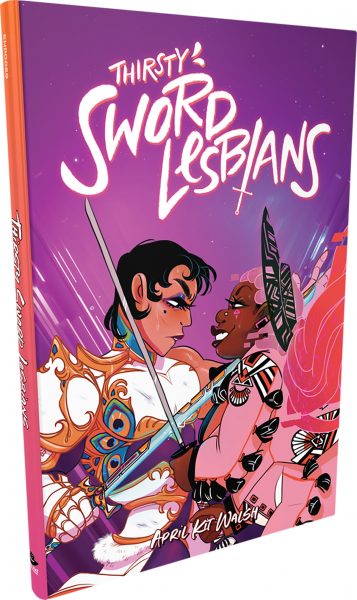
To celebrate queer gaming: Thirsty Sword Lesbians from Labyrinth Games & Puzzles. This roleplaying game embraces lesbian culture by unlocking a world of swords, romance, and battle. Ideal for group settings, the book presents a system of world building and character identities that are best brought to life by creative minds. Labyrinth, which has been a local Washington business for more than 15 years, celebrates non-digital fun through games and puzzles that connect the community. This gift is offered online and at Labyrinth’s Capitol Hill location. ($29.99)
To make a bold statement: The “Resist” T-shirt from Propper Topper. This locally screen-printed black tee features the Washington flag designed within a raised fist, symbolizing both Washington pride, and political resistance. The shirt is made exclusively by Propper Topper, a local Washington business that evolved from a hat shop to a gift store since opening in 1990. The tri-blend unisex shirt is available both for pickup at Propper Topper’s Cathedral Heights location and shipping via the online site. ($32)
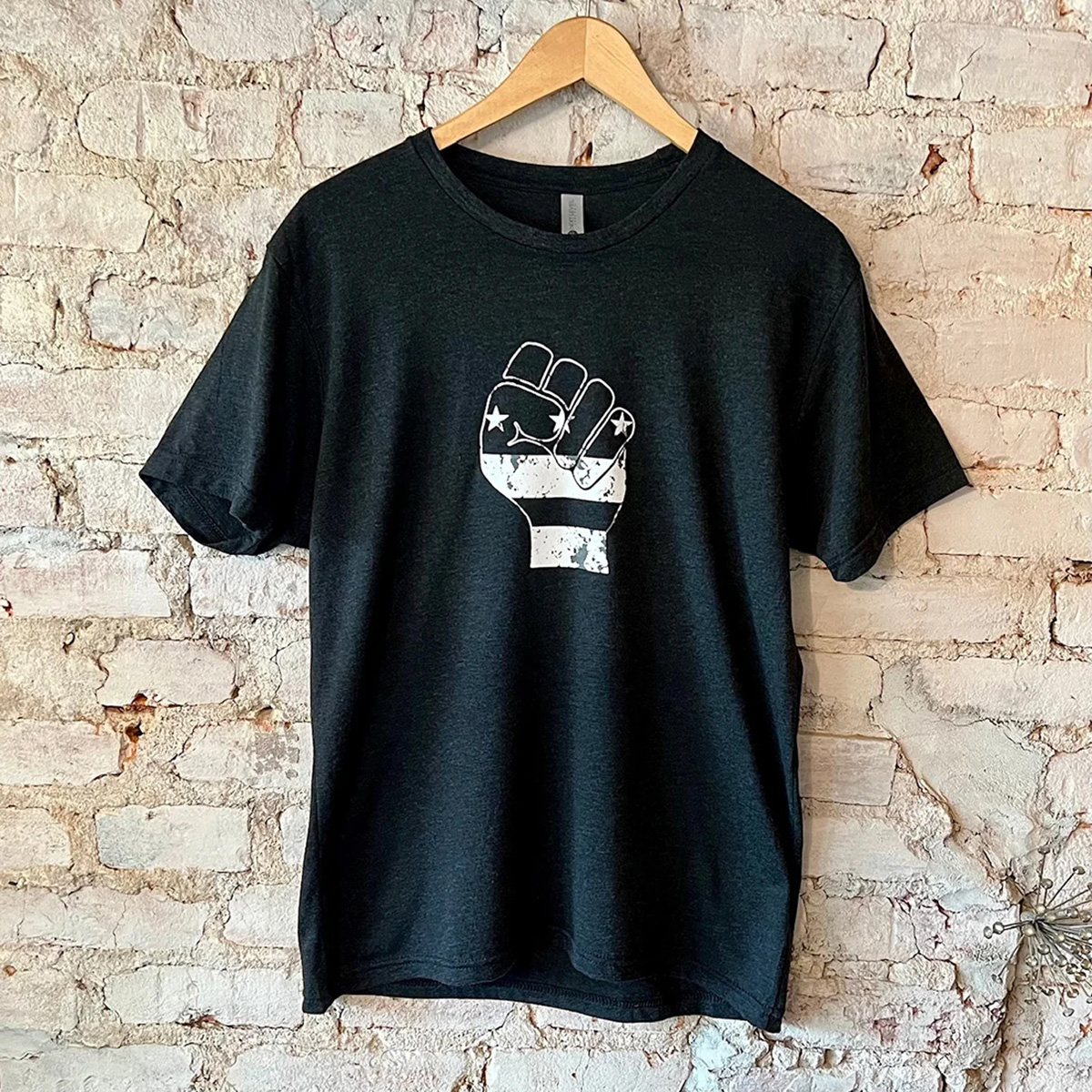
To keep it c(g)lassy: The Glass Ball earrings from Blue Moon Aquarius. Gifting can rarely go wrong when it comes to a new pair of earrings. The unique statement earrings — made of polymer clay, glass, and 18k gold plating over surgical steel — are hand cut, sanded and assembled in Washington, meaning each set is unique. Blue Moon Aquarius, a local brand, is known for its small batch jewelry and home decor designed with clay materials. Available in oxblood, hunter green, lavender, and bluestone color palettes, these earrings are available for purchase on Blue Moon Aquarius’ website and at the DowntownDC Holiday Market. ($48)
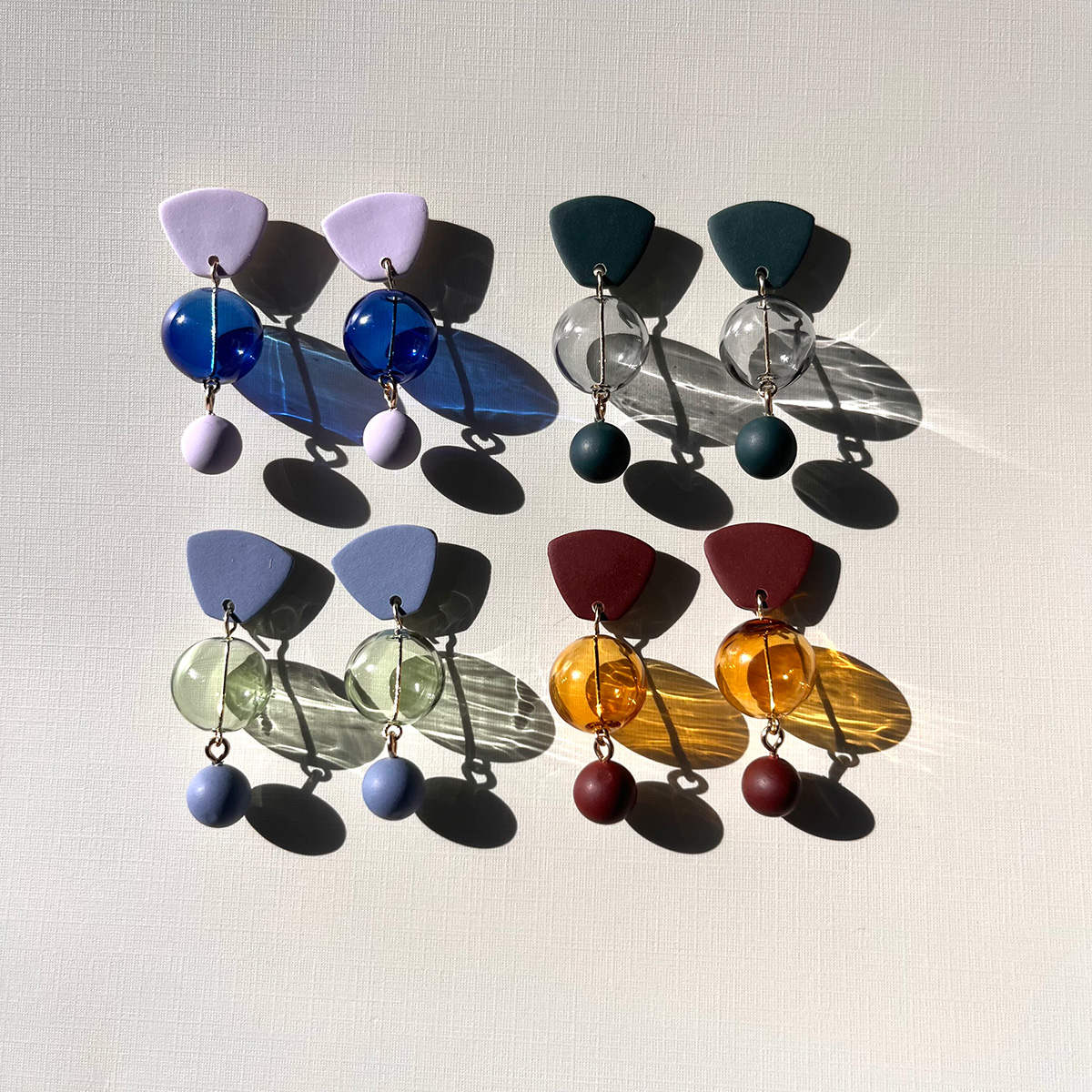
To elevate a holiday tea or charcuterie party: The Honey Flight: Tea Lover’s Selection from BannerBee. This local honey company presents the ideal gift to make cozying up with a cup of tea slightly more special. The Honey Flight contains three types of raw wildflower honey infused with fair trade Ugandan vanilla bean, chai spices, and locally sourced lemon thyme herb. The gift is also an opportunity to uplift a family company based in the Mid-Atlantic that offers all-natural, sustainable products. The flight is available online, at the DowntownDC Holiday Market or at the Arlington Courthouse and Dupont Farmers’ Markets. ($36)

For Baltimore shoppers: If you’re in Charm City, don’t miss Balston Mercantile, opened by a gay couple in June. Their gorgeous shop in the Hampden neighborhood offers an array of unique, upscale finds, from barware and artwork to cookbooks and home decor and more. (849 W. 36th St.)
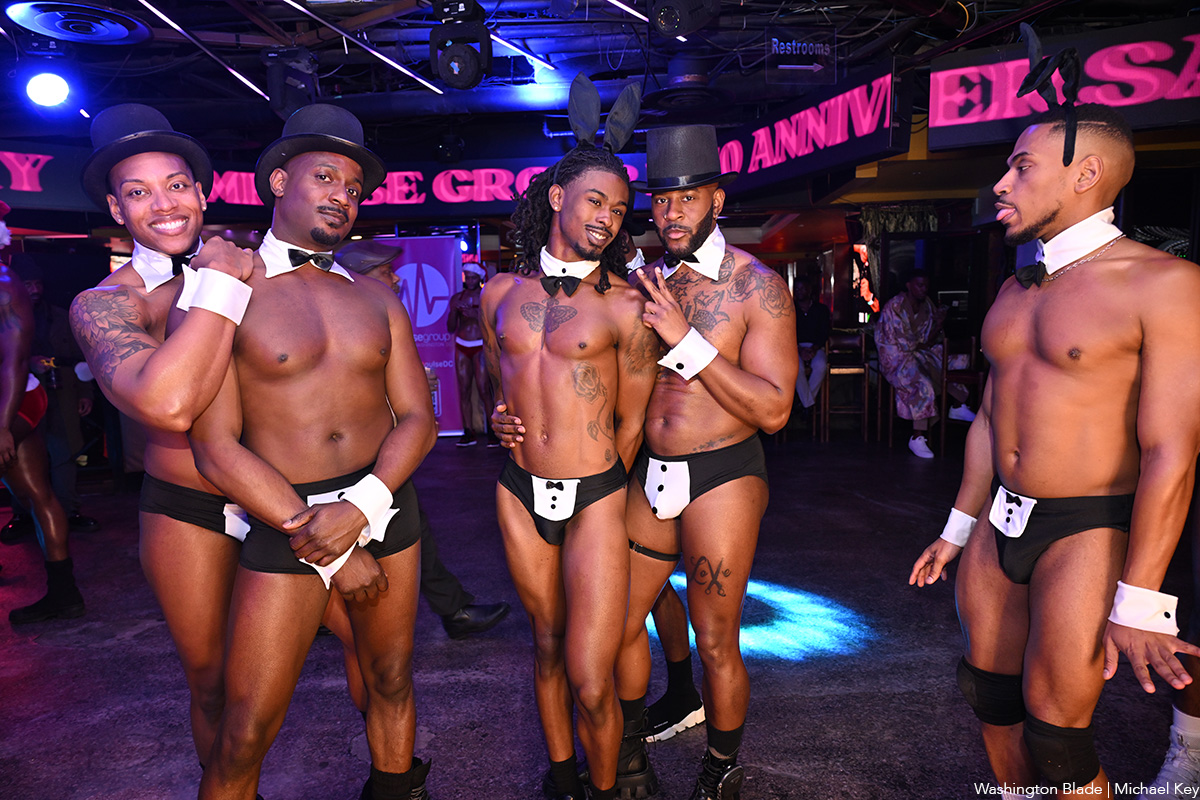
Impulse Group DC held “10’s Across the Board: A Celebration of 10 Years” at Bravo Bravo (1001 Connecticut Ave., N.W.) on Sunday, Dec. 14. Impulse Group DC is a volunteer-led 501(c)(3) and affinity group of AIDS Healthcare Foundation dedicated “to engaging, supporting, and connecting gay men” through culturally relevant health and advocacy work.
(Washington Blade photos by Michael Key)

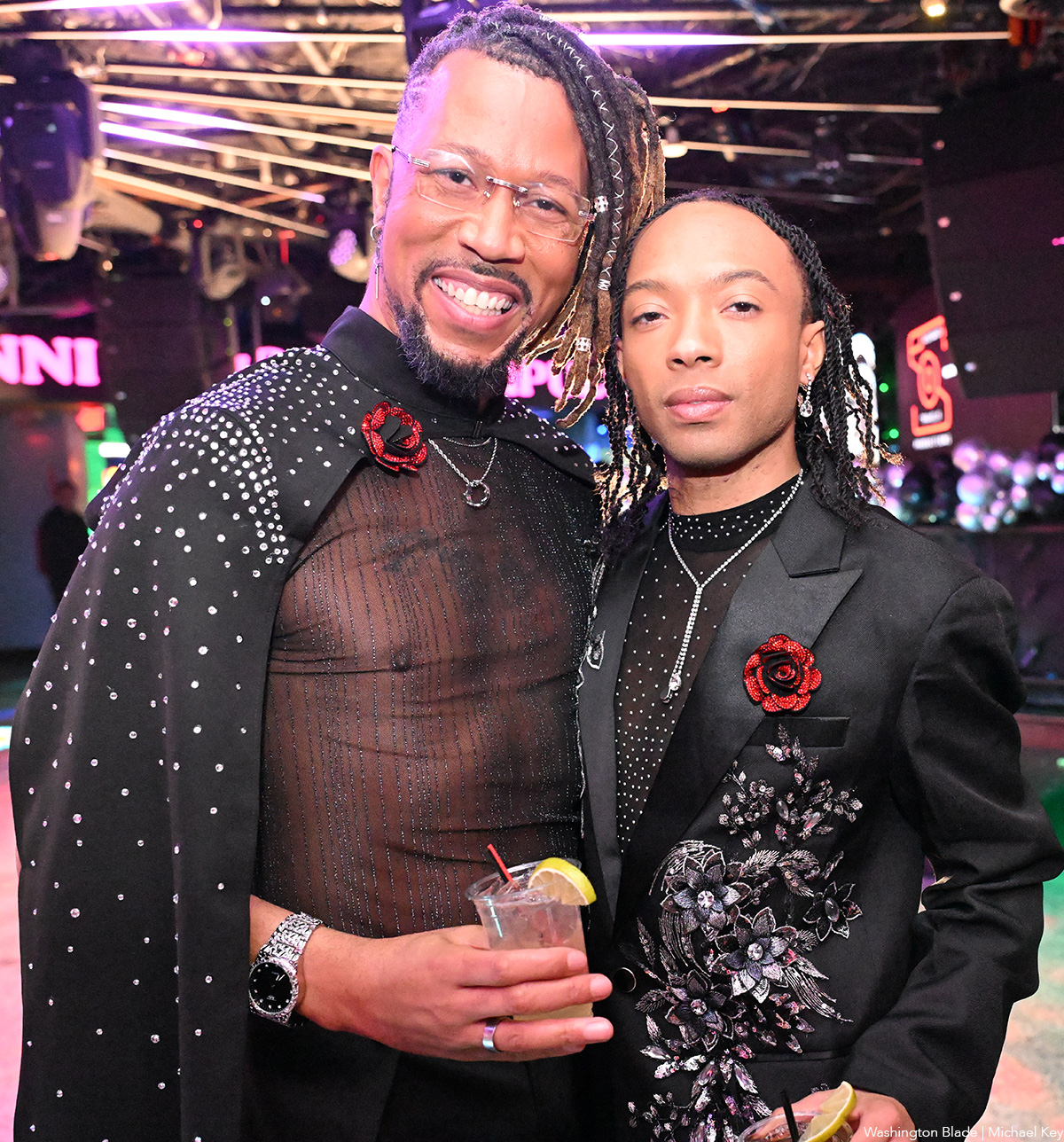
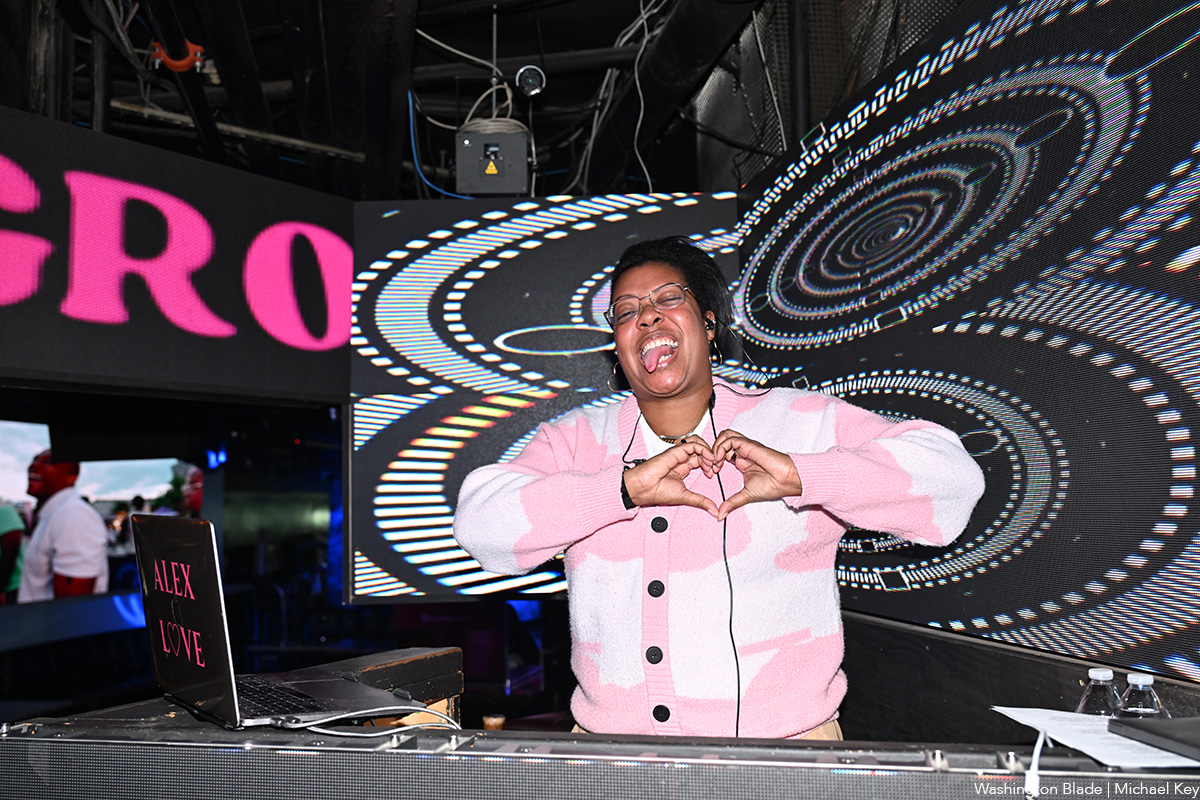
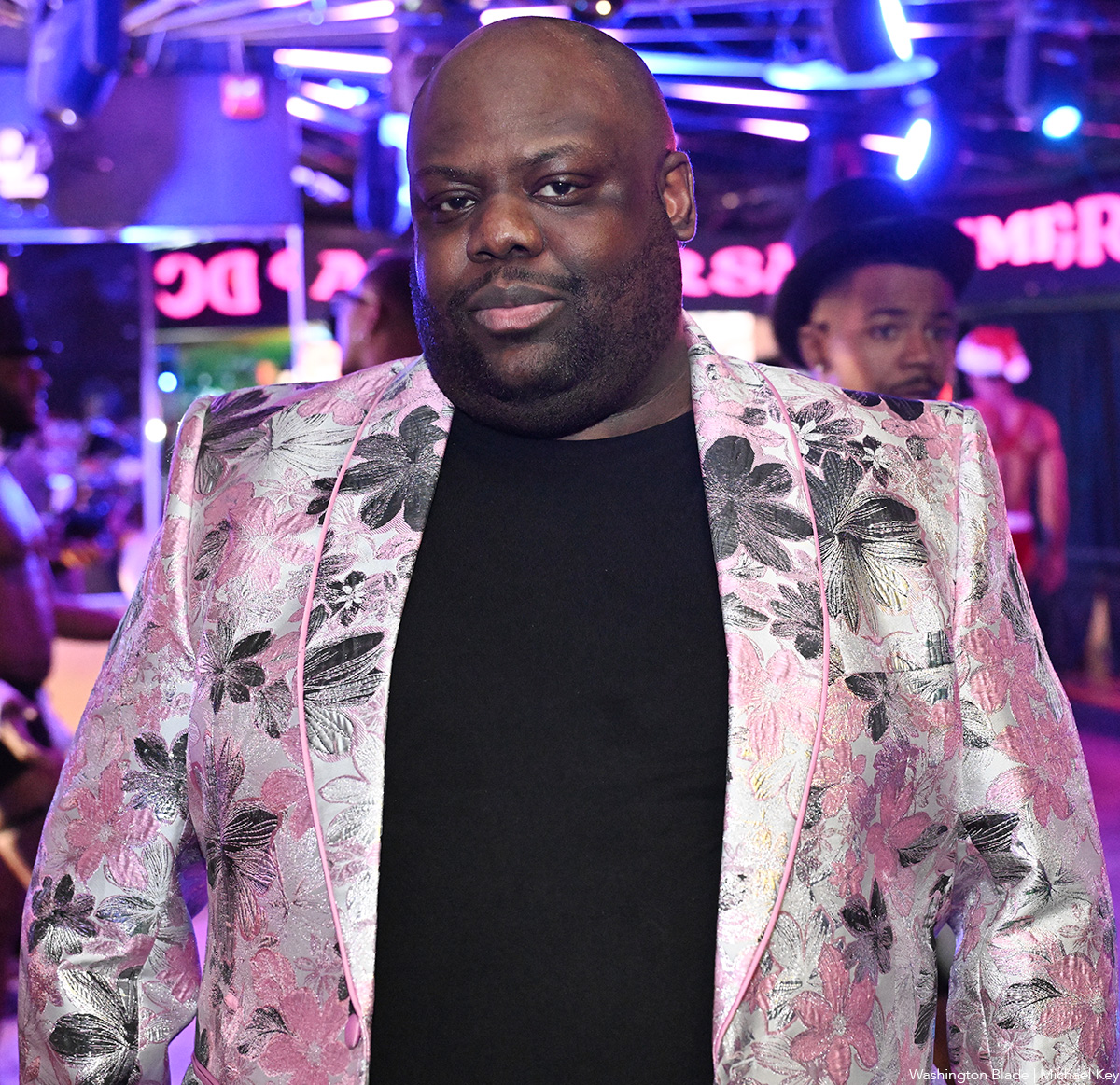
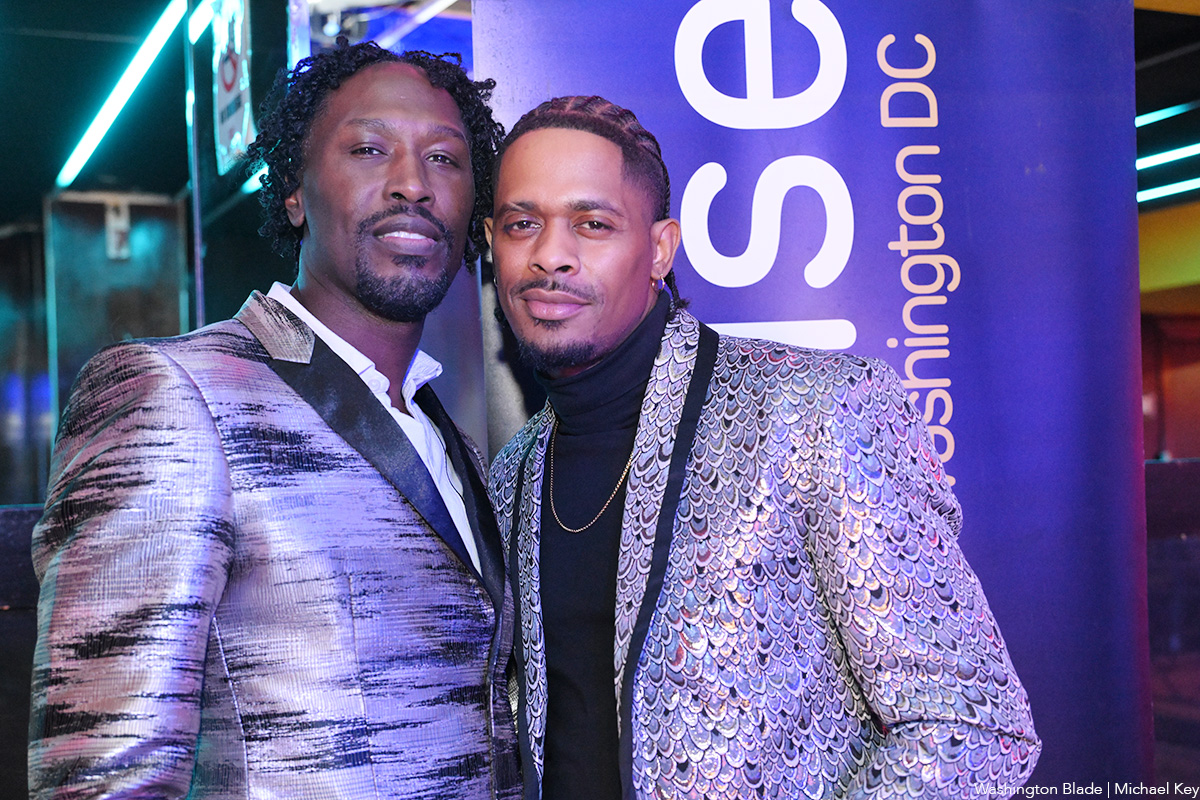
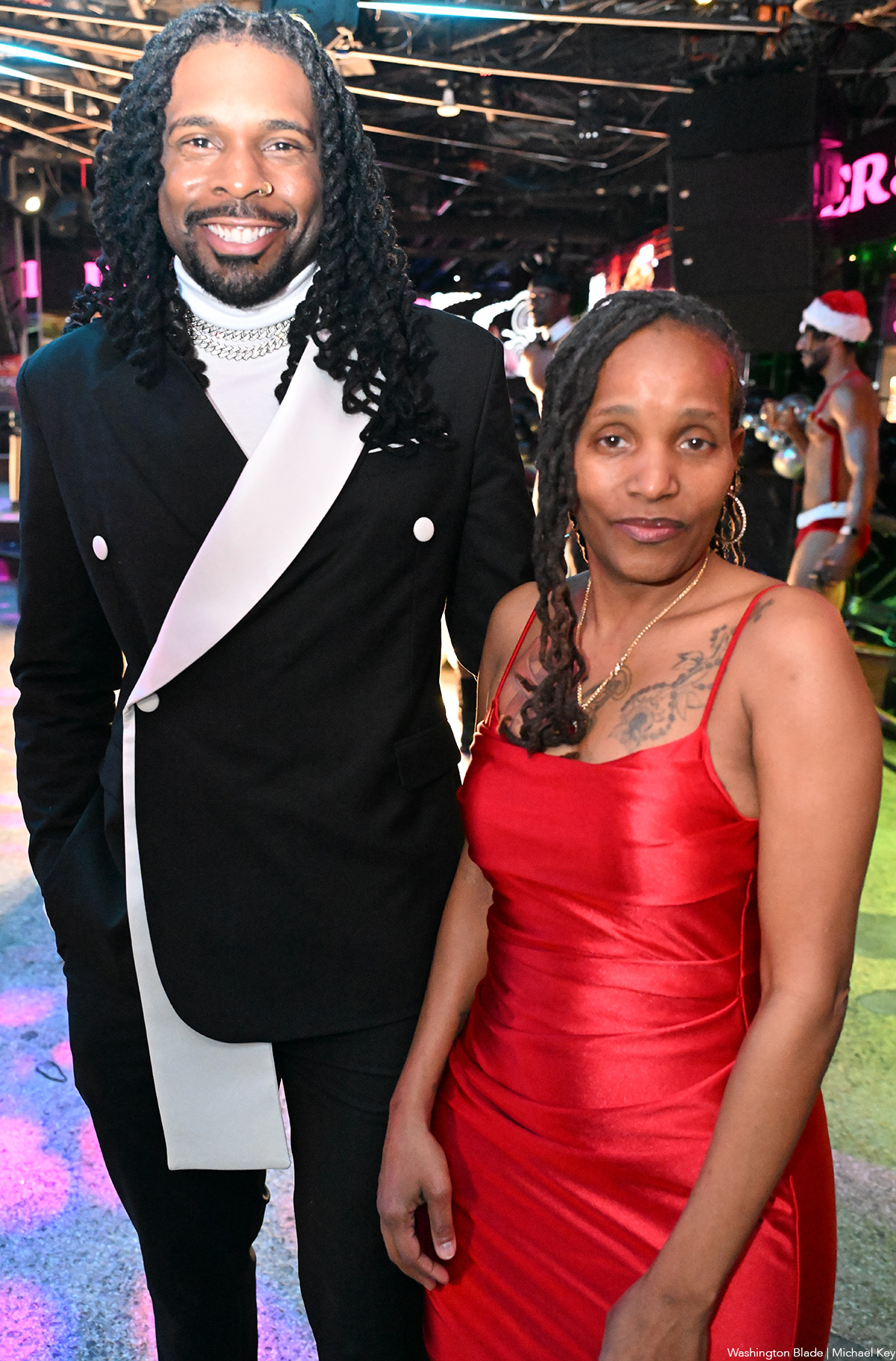
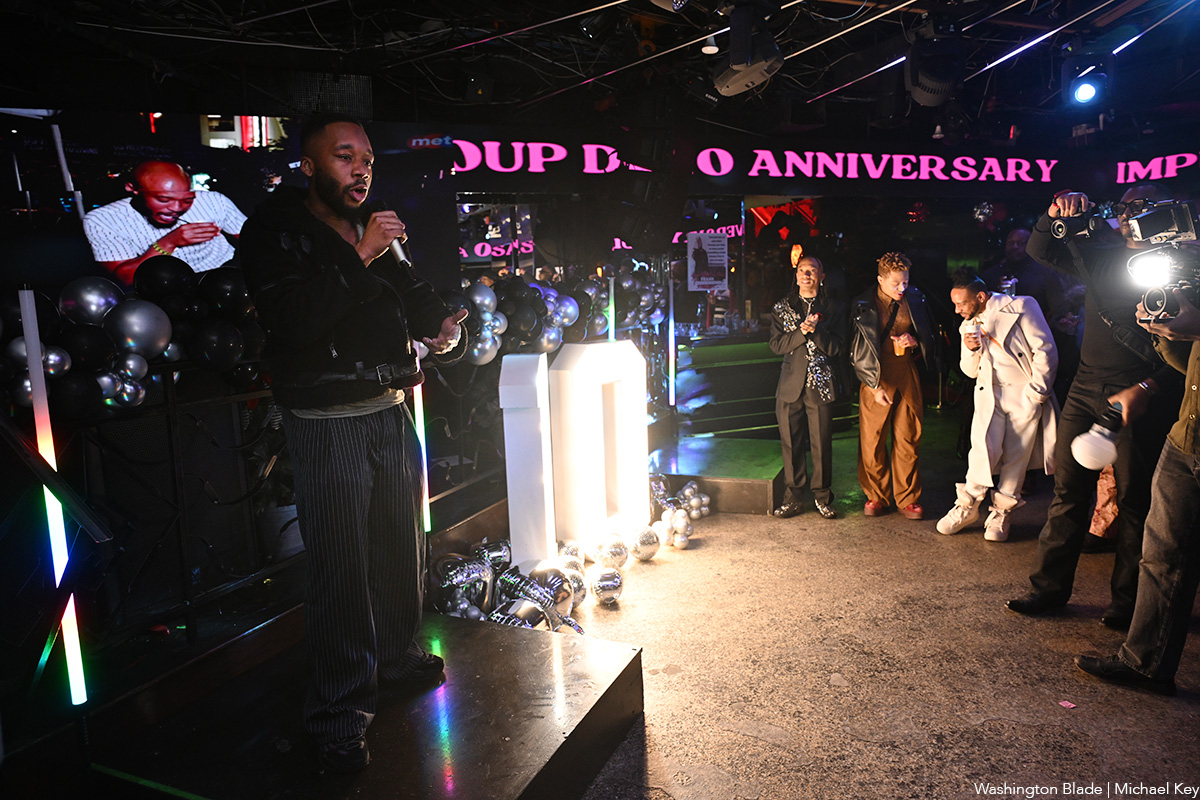
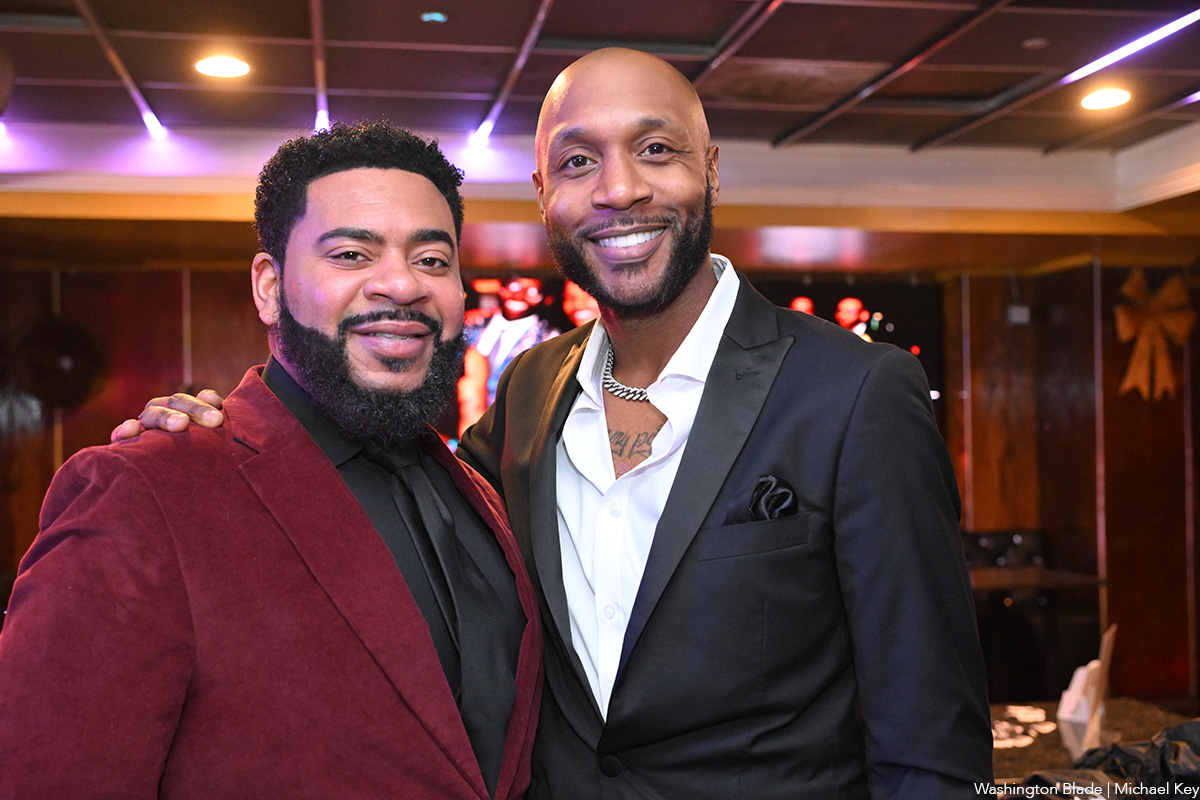
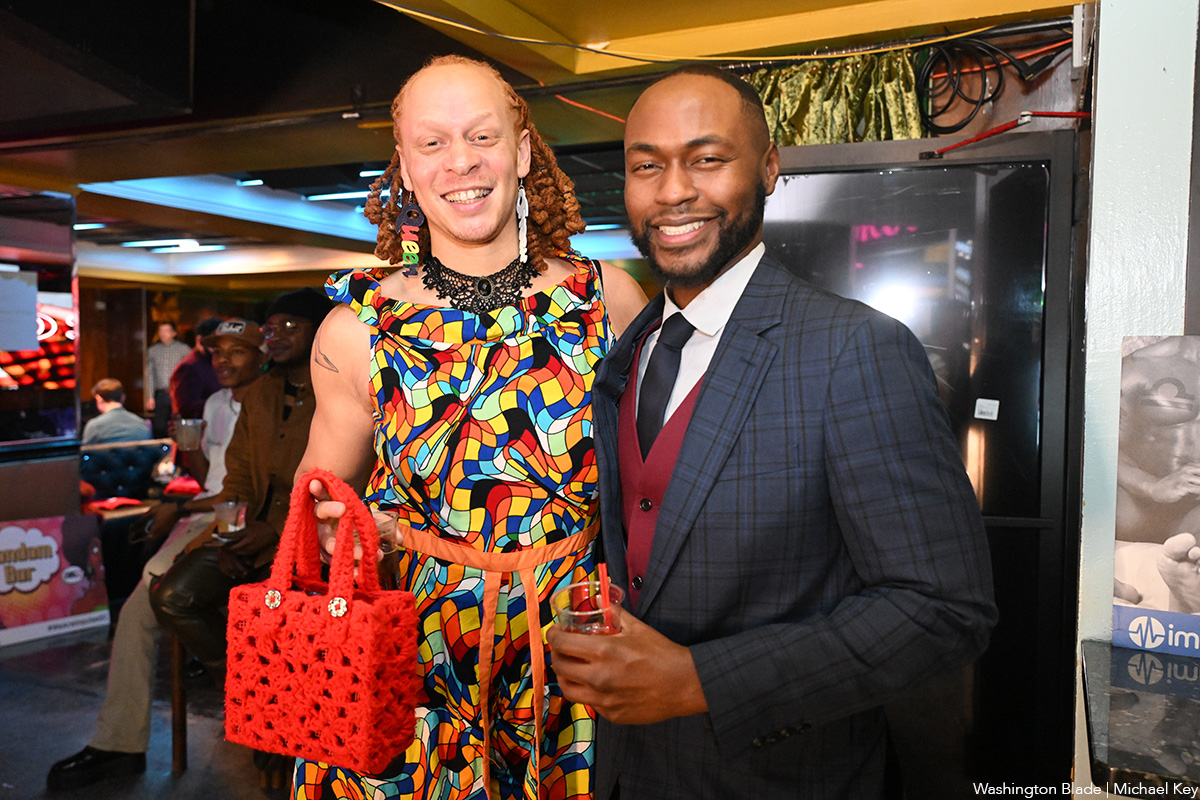
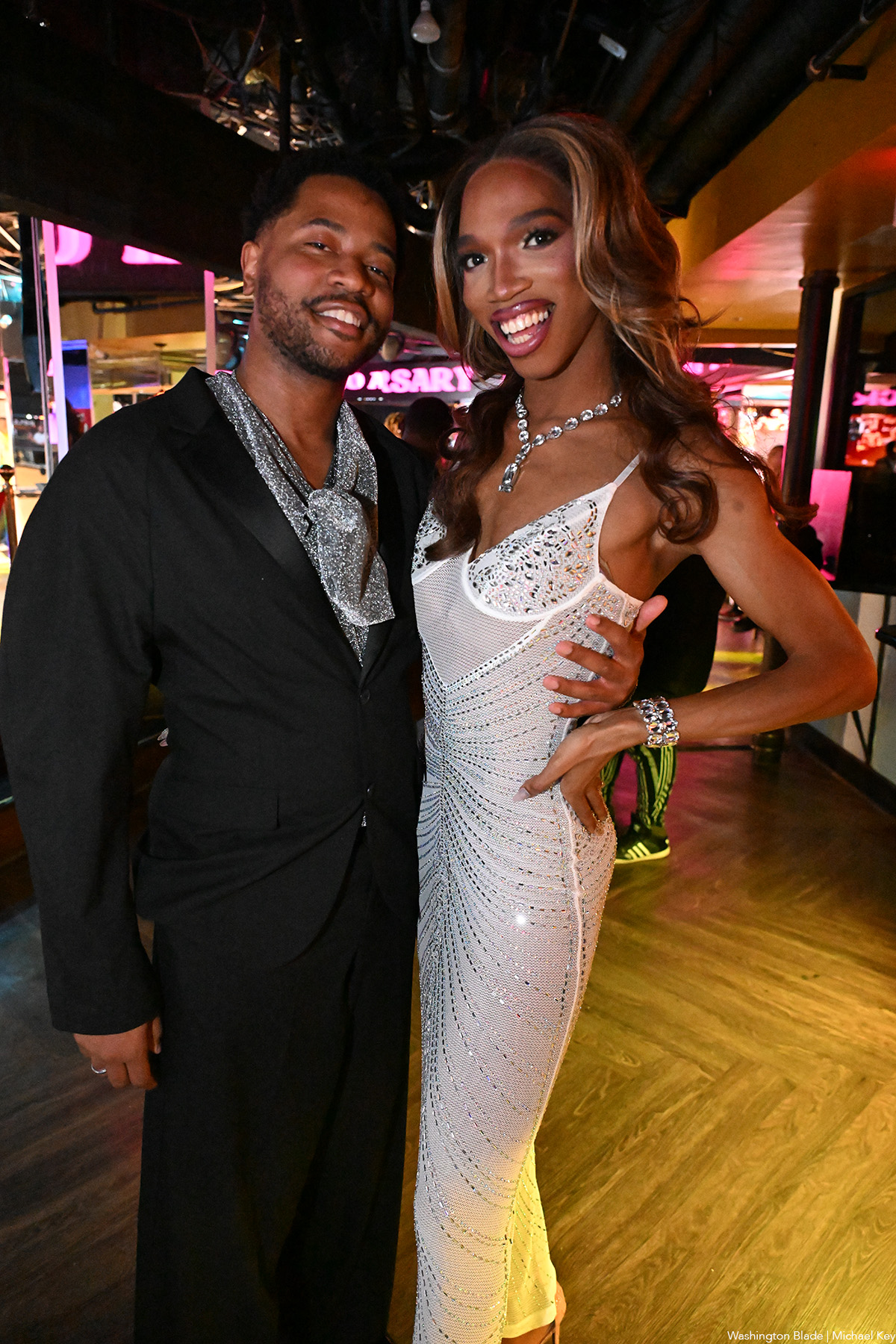
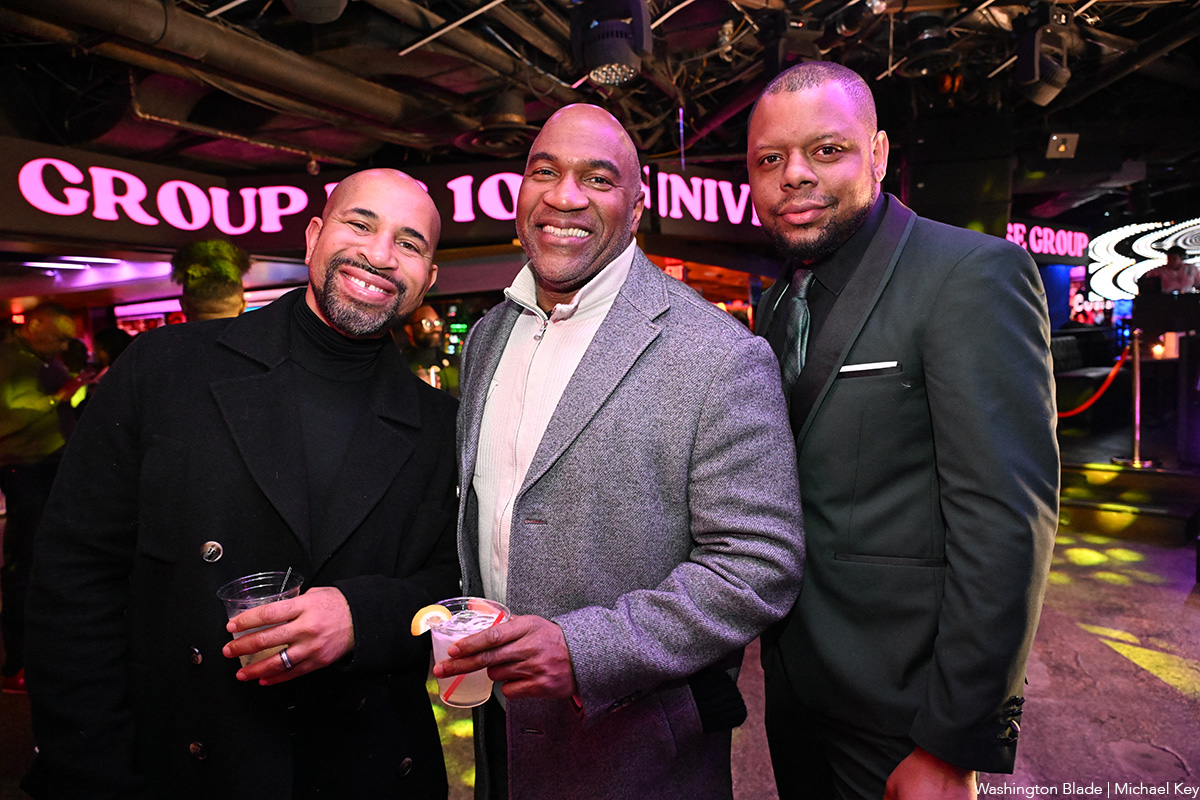
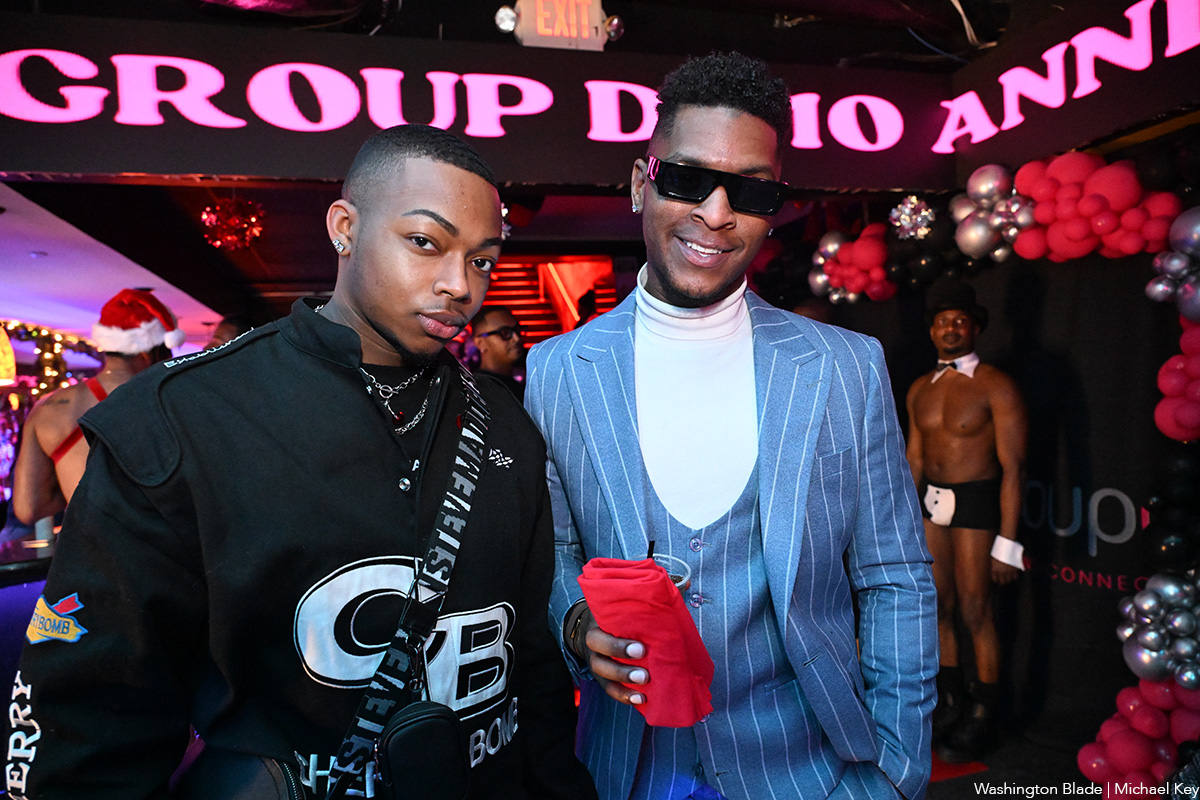
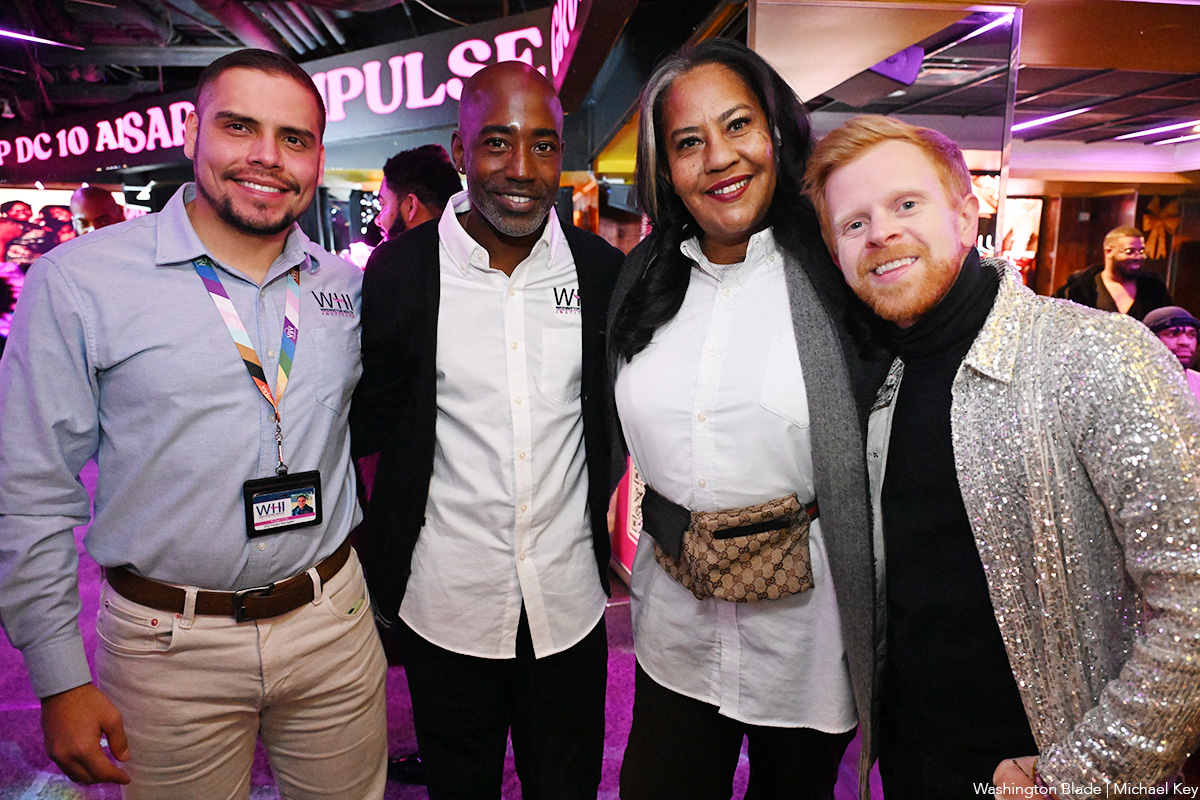
-

 Opinions5 days ago
Opinions5 days ago2026 elections will bring major changes to D.C. government
-

 Kazakhstan5 days ago
Kazakhstan5 days agoKazakh Senate approves anti-LGBTQ propaganda bill
-

 District of Columbia4 days ago
District of Columbia4 days agoNew queer bar Rush beset by troubles; liquor license suspended
-

 Letter-to-the-Editor5 days ago
Letter-to-the-Editor5 days agoCandidates should pledge to nominate LGBTQ judge to Supreme Court



